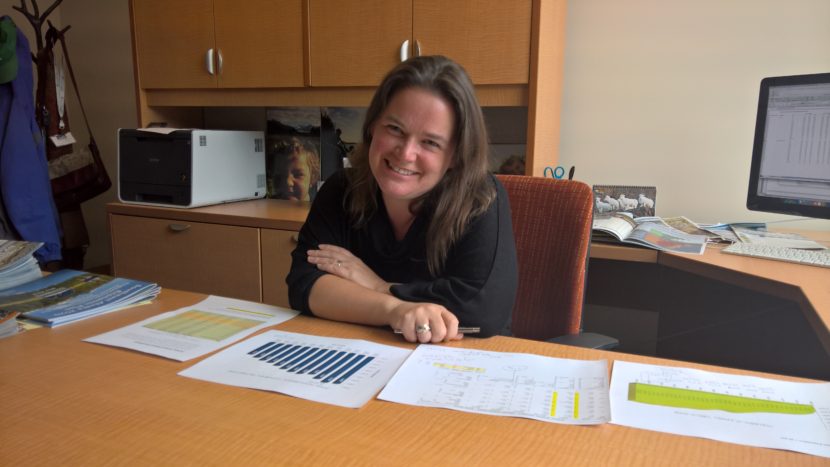
Juneau’s unexpectedly high student count for the new school year is a big deal for local education officials, but it’s also a good indicator for how the local economy is doing.
Economics, demographics and spreadsheets make a lot of people’s eyes glaze over, but they’re sort of Meilani Schijvens’ jam. She’s the director of Rain Coast Data, which tracks economic indicators and produces economic reports about Southeast Alaska.
She is also a mom with two kids in the school system.
“So I’m doubly curious about how enrollment is going,” she said.
She was eager to dig into the Juneau School District’s preliminary student count.
On her office desk in downtown Juneau, she’s spread out three multicolored charts and the student count spreadsheet in front of her. Her head’s down, bopping from chart to spreadsheet to chart as she works the new information into her picture of Juneau.
“You can see that I’m kind of obsessed with all data about Southeast Alaska, with all numbers,” she said. “Tracking population is a really good way to track the economic health of a community, and tracking student enrollment numbers is another good way to track that.”
The conventional wisdom says that the size of state government and its budget are also good economic indicators in the capital city, since so much of the money moving around is that of state workers.
So with policymakers hacking away at the state budget — about $800 million and more than 300 jobs this year alone:
“Yeah, it’s really interesting because I keep running the numbers, and I keep trying to see that. I keep trying to see this decrease,” she said. “And I think, you know, when we pay attention to the news and when we pay attention to the budget and what’s going on at the state, we’re all expecting to see this fiscal contraction and a reduction in economic indicators. But the reality is that what’s going on at the state level hasn’t hit the communities yet. It hasn’t hit Juneau yet.”
The way state jobs are being shed could also explain why the contraction hasn’t pushed school enrollment numbers down, Schijvens said. Many of the jobs are being shed through attrition by leaving retirees’ positions unfilled. Retirees typically also don’t have kids to pull out of school.
That’s Schijvens’ take on why student enrollment isn’t declining.
But why’s it growing?
It could be millennials’ kids starting to enter the school system, she said. She thinks this could be the end of a school enrollment trough that began in the 1998-1999 school year. And,
“In many ways, the Juneau economy is booming,” she said.
Juneau has a strong private sector, Schijvens said. Juneau’s population and job numbers are the highest they’ve ever been. More people are flying into Juneau than ever before.
“And so you haven’t had that impact yet,” she said. “It’s coming, I think it’s coming, I’m not looking forward to it. But 2016 is still appearing to be a really strong year for the community.”
Correction: An earlier version of this story overstated the number of kids Meilani Schijvens has. She has two kids, not three.
